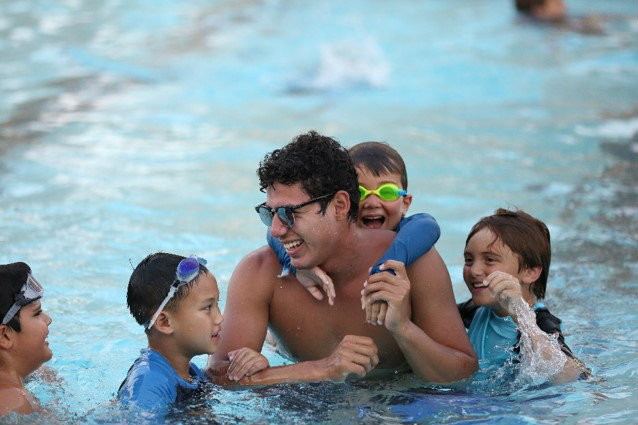William Woollett Jr. Aquatics Center
Irvine, Calif.
Category: Programming
Highlights
• The William Woollett Jr. Aquatics Center had to deal with a clientele that all seemed to want to take the same courses. This causes congestion to the schedule, and in the parking lot.
• The team developed some innovative scheduling strategies, such as converting four-day-a-week classes into longer sessions occurring twice a week.
• Flexible scheduling was also added to the facility’s private lesson program, resulting in a 400% increase in private lessons.
Two dynamics in this Orange County, Calif. city posed challenges for programming and scheduling.
First, public water space — and on-site parking — are at a premium. Secondly, the city-run William Woollett Jr. Aquatics Center serves a growing population in a dual-income, upper-middle-class community.
Households with two working parents typically want swim lessons that take place after work or on weekends, with slots quickly filling for those classes. So, as waitlists grew for classes with optimal times, lessons conducted at less desirable times remained wide open.
The municipal swimming program is one of the largest in Southern California. “Our learn-to-swim program alone serves more than 10,000 students a year,” says Cory Hilderbrand, aquatics supervisor. “Our 25-yard teaching pool was typically bursting at the seams, and so was the parking lot.

Streamlining traffic
To alleviate congestion both in and outside the pool, aquatics staff needed to disperse students across more classes. That meant encouraging people to choose less popular times.
To do this, the team moved away from the standard 25-minute classes that take place four days a week, and introduced longer sessions that take place only twice a week. These classes are scheduled strategically near the beginning and end of the most popular time slots.
“People started signing up for the earlier and later classes, because leaving work early or rushing out the door two days a week is much better than rushing around all four days, or eating dinner later two days a week is worth the longer swim lesson,” Hilderbrand explains.
As families responded positively, with some requesting even more options, the staff began offering the longer sessions on weekends, too.
To address long waitlists, which Hildebrand says can be as much as 75- to 80-people deep for a four-person class, staff introduced flexible scheduling to their private lesson program. This resulted in a 400% increase in private lessons in 2019.

Problem solved
The new learn-to-swim schedule freed up space both in the pool and parking lot. Consequently, the staff could launch new programs and expand others.
For instance, it could add group classes to the adaptive swim program for children with disabilities, which previously only offered one-on-one instruction. Much like standard swim classes, the adaptive group classes move participants through levels, with a staff-to-student ratio of 1:3.
“We can accommodate more people but provide the same service level,” says Hildebrand.
What’s more, the aquatics center is receiving fewer complaints about a full parking lot, and instructors are seeing fewer students arriving late to class due to parking.
